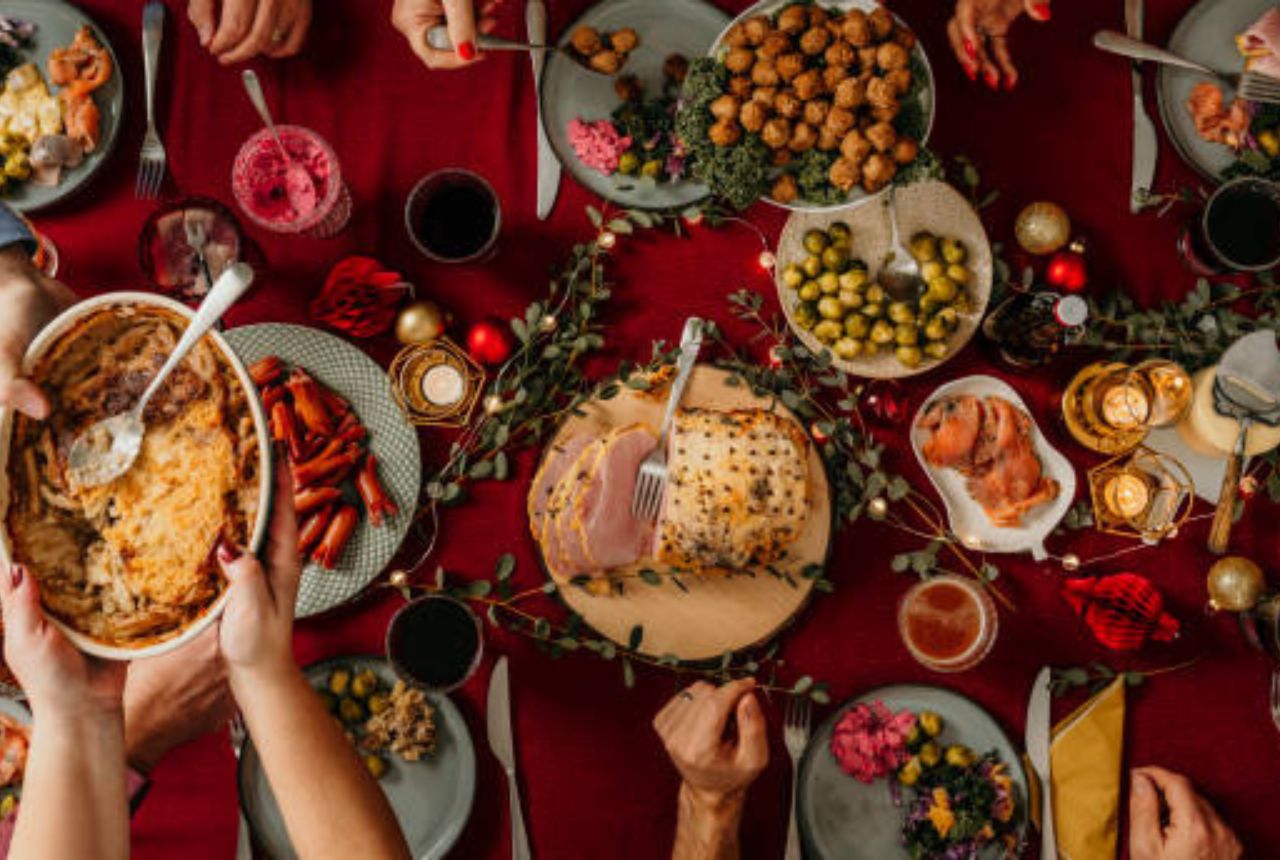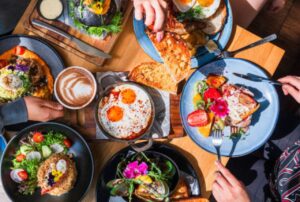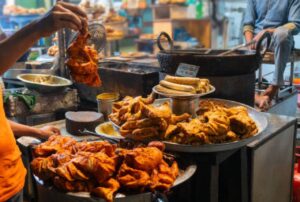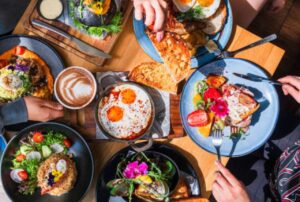Ever notice how food magically turns any gathering into a celebration? Birthdays, weddings, religious festivals—heck, even funerals—there’s always some kind of food involved. Why? Because food is never just food. It’s love, tradition, and low-key bragging rights (looking at you, Italians).
So, if you’re the kind of person who plans trips based on what you’re going to eat (same here), buckle up. We’re about to take a flavorful joyride around the globe to see how different cultures throw a party—plate first.
Italy: Where Every Meal Is Basically a Celebration
Let’s be real—Italians could turn Tuesday dinner into a five-course event.
Key Celebration Food Traditions:
- Weddings come with 10+ courses, and that’s before dessert.
- During Christmas, families dig into panettone, a fluffy sweet bread that tastes like clouds and nostalgia.
- And Easter? Expect agnello (roast lamb) and tons of chocolate eggs—some of which are big enough to double as furniture.
Why it’s special: Italians don’t just eat—they savor, argue, laugh, cry, and toast over their meals. Every bite is an expression of family, pride, and yes, drama.
Fun Fact: If you say no to more pasta, expect a concerned “Ma perché?!” followed by more pasta. Resistance is futile.
Japan: Celebrating With Ceremony and Precision
Japanese food culture is next-level. It’s about balance, respect, and aesthetics. Ever seen a sushi chef work? It’s like food ballet.
Celebration Highlights:
- New Year (Oshogatsu) is the big one. Families prepare osechi ryori—a multi-compartment box filled with symbolic dishes like sweet rolled omelets (datemaki) for success and black beans (kuromame) for health.
- For birthdays or special wins, sushi or kaiseki meals (multi-course masterpieces) are go-to celebrations.
Why it stands out: Every dish is a work of art—literally. And presentation? It’s so beautiful you’ll hesitate to eat it (for like 3 seconds, then devour it).
FYI: Slurping noodles is actually a compliment. So go wild.
Mexico: Where Spices Meet Spirit
Mexican celebrations are bold, loud, spicy, and soulful—just like the food.
Notable Festive Foods:
- Día de los Muertos (Day of the Dead) brings pan de muerto—a soft, sweet bread dusted with sugar—and beautifully decorated sugar skulls.
- Christmas often includes tamales, which are basically flavor bombs wrapped in corn husks.
- For birthdays? You better believe there’s a piñata and a giant plate of enchiladas or pozole.
Why it’s unforgettable: The food isn’t just for the living. Families also leave offerings (including tacos!) on home altars for their dearly departed. Talk about VIP treatment in the afterlife.
India: Spices, Sweets, and Spectacles
Ever been to an Indian wedding? It’s not just a celebration—it’s a gastronomic marathon.
Cultural Food Celebrations:
- Diwali (Festival of Lights) comes with enough sweets to give dentists nightmares—gulab jamun, laddoos, barfi—you name it.
- Weddings feature buffet tables that could feed small countries. From biryani to paneer tikka, it’s a nonstop food parade.
Why it’s epic: Each region has its own thing. North India loves rich gravies, while South India’s all about coconut, curry leaves, and rice dishes served on banana leaves. Spoiler: it’s all amazing.
And yes, if someone insists you take more food, just know you don’t really have a choice. It’s an unspoken cultural law.
China: Symbolism Served on a Plate
Chinese food traditions are all about meaning. You’re not just eating dumplings—you’re eating good luck.
Celebration Must-Haves:
- Chinese New Year is the showstopper. Dishes like:
- Dumplings (wealth)
- Fish (prosperity)
- Longevity noodles (self-explanatory) take center stage.
- Moon Festival means one thing: mooncakes. Dense, sweet, and calorie-packed, but totally worth it.
What makes it unique: The belief that what you eat shapes your fate. So yeah, finish those dumplings—you need that extra good fortune.
IMO: No culture makes dumplings quite like China. Just saying.
Nigeria: Feasting With Fire, Flavor, and Family
If you’ve never had Nigerian jollof rice, you haven’t lived. Period.
Food During Celebrations:
- At weddings, birthdays, and naming ceremonies, staples like:
- Jollof rice
- Fried plantains
- Pepper soup
- And suya (grilled spicy beef) take the spotlight.
- During Eid and Christmas, you’ll find tables loaded with rice dishes, soups, and—no joke—entire goats.
Why it’s lit: Nigerian parties are LOUD and joyous. The food? Equally bold. Spicy, rich, and cooked in massive quantities, because leftovers are basically the next-day reward.
Rhetorical question: What’s a party without jollof, really?
France: Where Food Is the Celebration
Trust the French to turn meals into an elegant art form.
Festive Food Staples:
- Christmas Eve (Réveillon) features multi-course dinners with:
- Oysters
- Foie gras
- Roast duck
- And a show-stopping bûche de Noël (Yule log cake).
- On Bastille Day, expect picnics with cheese, baguettes, wine, and lots of smug looks from tourists pretending they’re locals.
Why it’s magnifique: French food is less about quantity, more about perfection and pleasure. Every bite is like a slow dance.
Pro tip: Never rush a French meal. That’s basically criminal.
Brazil: Food, Dance, and Fireworks (In That Order)
Brazilian celebrations are hot, colorful, and overflowing with flavor.
Food During Festivities:
- During Carnival, street food reigns supreme—pastéis (fried pockets of goodness), acarajé (black-eyed pea fritters), and churrasco (grilled meats) are everywhere.
- At family events, expect generous portions of feijoada (black bean stew) and pão de queijo (cheesy bread rolls sent straight from heaven).
Why it rocks: Brazilians don’t eat quietly. They eat, dance, and laugh—all at once. Meals are energetic, social, and absolutely unforgettable.
FYI: If you’re a meat lover, Brazil might just ruin other BBQs for you forever.
Jewish Culture: Festivals Centered Around the Table
Jewish celebrations revolve around food that tells a story. Literally.
Holiday Highlights:
- Passover (Pesach): The seder plate features symbolic items like:
- Bitter herbs (the pain of slavery)
- Charoset (the sweetness of freedom)
- Hanukkah: Enter the glorious world of latkes (potato pancakes) and sufganiyot (jelly donuts). Deep-fried and divine.
Why it’s meaningful: Every dish has history. Every bite connects generations. And yes, grandma will judge if you don’t go for seconds.
Conclusion: Food Is the Ultimate Universal Language
So, what did we learn here (aside from the fact that we’re now starving)?
No matter where you go, food is the heart of every celebration. It brings people together, keeps traditions alive, and offers a sneak peek into what a culture really values. Whether it’s dumplings for luck, sweets for victory, or meat for basically any reason—food means something.
And let’s be honest—even if you forget the speeches, the rituals, and the formal outfits, you always remember the food.
Now, over to you—what’s your favorite cultural celebration food? Or better yet: Which country’s cuisine do you think throws the best party on a plate? (Spoiler: I’m still torn between Italy and Nigeria. Fight me.)
Go try something new this weekend—your taste buds will thank you. Bon appétit!







